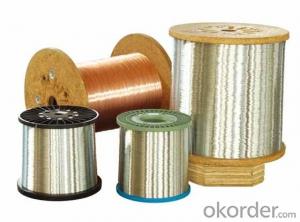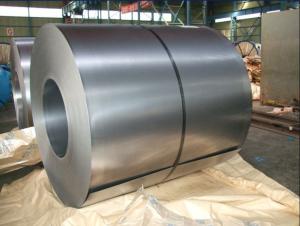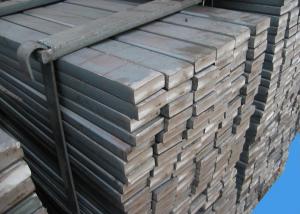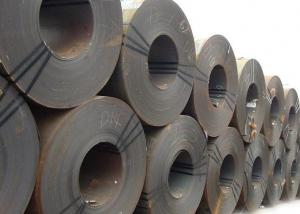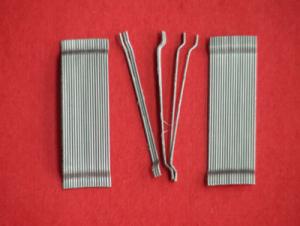BOX STITCHING WIRE STAPLE WIRE BRUSH WIRE
- Loading Port:
- China Main Port
- Payment Terms:
- TT OR LC
- Min Order Qty:
- -
- Supply Capability:
- -
OKorder Service Pledge
Quality Product, Order Online Tracking, Timely Delivery
OKorder Financial Service
Credit Rating, Credit Services, Credit Purchasing
You Might Also Like
1、SIZE :0.48-0.58-0.65-0.88-0.90-1.0-1.2-1.3-1.4-1.5-1.6-1.7-1.8-1.9-2.0mm
2、 TENSILE STRENGTH :500-800 N/mm2
800-1000 N/mm2
3、 ZINE COATING :10-25g/㎡
4、 WIRE DIAMETER TOLERANCE : ±0.02mm
5、 Packing :
TYP | WEIGHT(kg) | A(mm) | B(mm) | C(mm) | D(mm) |
BB20 | 18 | 200 | 110 | 33 | 180 |
BB35 | 32 | 253 | 116 | 33 | 175 |
K355 | 45 | 355 | 225 | 36 | 200 |
HY100 | 90 | 355 | 215 | 128 | 345 |
MP100 | 90 | 355 | 228 | 128 | 352 |
500LBS | 250 | 565 | 310 | 80 | 395 |
1000LBS | 500 | 600/625 | 356/381 | 80 | 610 |
Paper 650LBS barrel | 300 | 560 | 330 | 330 | 760 |
- Q: How is steel wire rope inspected for fatigue and wear?
- Steel wire rope is inspected for fatigue and wear through a variety of methods. One common approach is visual inspection, where trained personnel examine the rope for any signs of fraying, broken wires, or corrosion. Additionally, non-destructive testing techniques such as magnetic particle inspection or ultrasonic testing can be used to detect internal flaws or defects. Regular load testing is also conducted to evaluate the rope's performance under simulated working conditions. Overall, a combination of visual inspection, non-destructive testing, and load testing ensures a thorough inspection of steel wire rope for fatigue and wear.
- Q: What are the different types of steel coatings and their applications?
- There are several types of steel coatings available, each with its own unique properties and applications. Some common types include galvanized coatings, which provide corrosion resistance and are often used in outdoor applications; powder coatings, which offer durability and a decorative finish and are commonly used in consumer goods and automotive industries; epoxy coatings, which provide protection against chemicals and abrasion and are often used in industrial settings; and thermal spray coatings, which offer high temperature resistance and are commonly used in aerospace and power generation industries. These are just a few examples, and the choice of coating depends on the specific requirements of the application.
- Q: How is steel used in the production of pipelines?
- Steel is commonly used in the production of pipelines due to its strength, durability, and resistance to corrosion. It is used to construct the main body of the pipeline, providing a sturdy structure to transport various types of fluids over long distances. Additionally, steel pipes can be welded together, allowing for easy installation and maintenance.
- Q: How do steel products compare to other materials in terms of strength and durability?
- Steel products generally have higher strength and durability compared to other materials. Steel is known for its exceptional strength-to-weight ratio, making it suitable for a wide range of applications. It can withstand heavy loads, resist deformation, and maintain its structural integrity even under extreme conditions. Additionally, steel is highly durable, as it is resistant to corrosion, fire, and other forms of wear and tear. These qualities make steel a preferred choice in various industries, including construction, automotive, and manufacturing.
- Q: What are the common uses of steel products in construction?
- Steel products are commonly used in construction for various purposes such as structural framing, reinforcing concrete, roofing, cladding, and in the fabrication of beams, columns, and trusses. Steel's strength, durability, and versatility make it an ideal material for constructing buildings, bridges, and other infrastructure projects.
- Q: What are the different types of steel wire mesh and grids available?
- There are several types of steel wire mesh and grids available, including welded wire mesh, woven wire mesh, expanded metal mesh, and perforated metal mesh. Welded wire mesh is made by welding the intersections of wires together, providing a strong and rigid mesh. Woven wire mesh is created by weaving wires together in a specific pattern, offering flexibility and versatility. Expanded metal mesh is produced by cutting and stretching a sheet of metal, resulting in a mesh with diamond-shaped openings. Perforated metal mesh is made by punching holes in a metal sheet, allowing for various hole sizes and patterns. Each type of steel wire mesh and grid has its own unique characteristics and applications.
- Q: What are the potential health hazards associated with working with steel products?
- Some potential health hazards associated with working with steel products include exposure to hazardous substances such as metal fumes, dust, and noise. Inhalation of metal fumes and dust can cause respiratory issues and lung diseases, while prolonged exposure to high levels of noise can lead to hearing loss. Additionally, cuts, burns, and other physical injuries can occur while handling steel products. It is important to use proper safety equipment and follow safety protocols to minimize the risks associated with working with steel products.
- Q: What are the different types of steel fasteners and their uses?
- There are various types of steel fasteners, including screws, bolts, nuts, and washers. Screws are used to secure materials together, while bolts are used in assemblies that require a higher level of strength and rigidity. Nuts are paired with bolts to secure them in place, and washers are used to distribute the load and prevent damage to the material being fastened. Each type of steel fastener has its own specific uses depending on the application and the level of strength required.
- Q: How is steel used in the manufacturing of machinery and equipment?
- Steel is commonly used in the manufacturing of machinery and equipment due to its strength, durability, and versatility. It is used to fabricate various components, such as frames, shafts, gears, and casings, that require high strength and resistance to wear and tear. Additionally, steel's malleability allows for easy shaping and forming, making it suitable for complex machinery designs. Its ability to withstand extreme temperatures and pressures further enhances its utility in the manufacturing process.
- Q: How is steel used in the construction of pre-engineered buildings?
- Steel is used extensively in the construction of pre-engineered buildings as it offers excellent strength, durability, and versatility. It is used for the primary structural components such as columns, beams, and roof trusses, providing a strong framework for the entire building. Additionally, steel panels are commonly used for the walls and roof, ensuring a sturdy and weather-resistant enclosure. Overall, steel's high strength-to-weight ratio and ability to be easily fabricated make it an ideal material for pre-engineered building construction.
Send your message to us
BOX STITCHING WIRE STAPLE WIRE BRUSH WIRE
- Loading Port:
- China Main Port
- Payment Terms:
- TT OR LC
- Min Order Qty:
- -
- Supply Capability:
- -
OKorder Service Pledge
Quality Product, Order Online Tracking, Timely Delivery
OKorder Financial Service
Credit Rating, Credit Services, Credit Purchasing
Similar products
Hot products
Hot Searches
Related keywords
